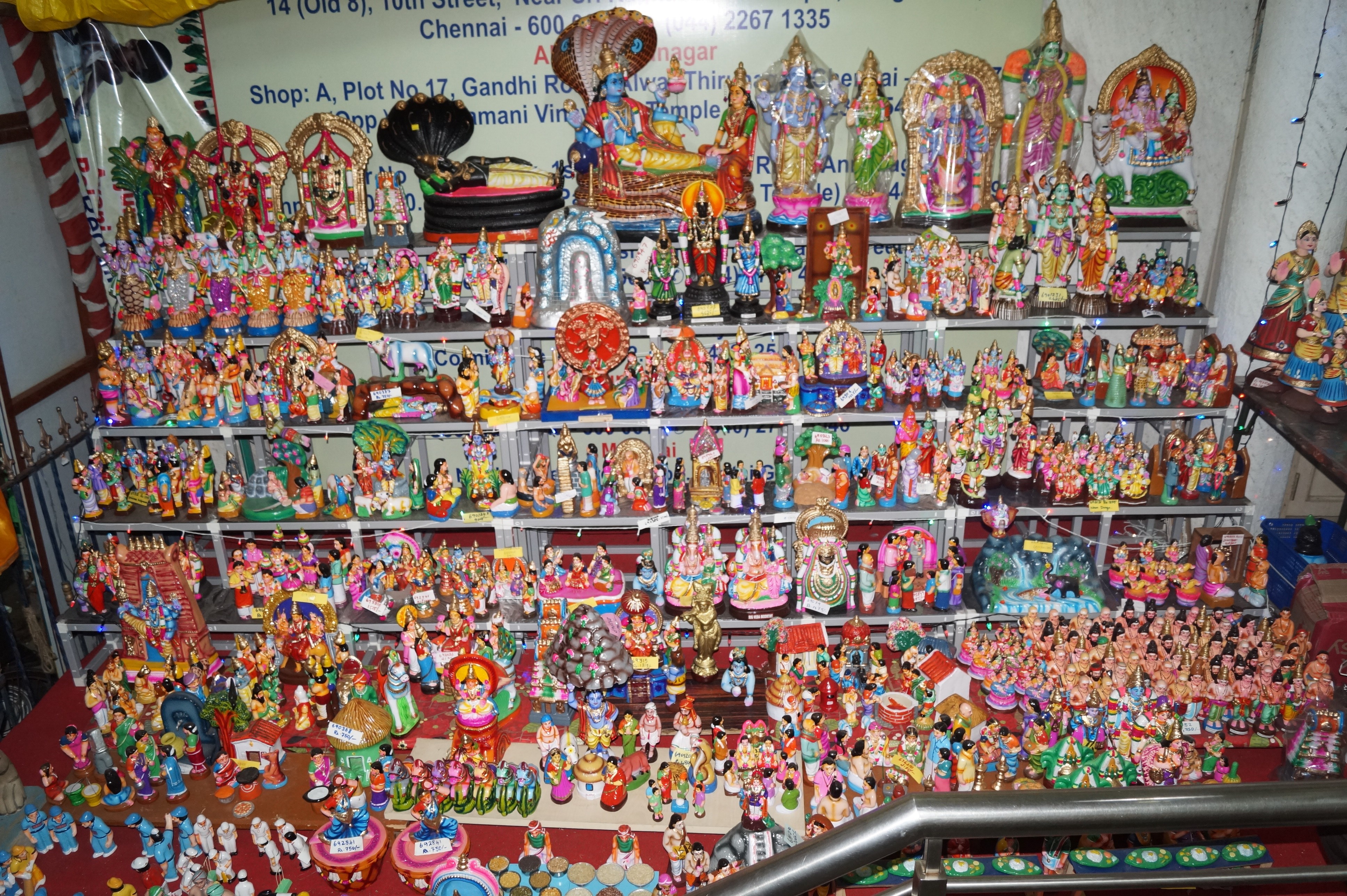Dussehra is a festival that different regions in the country has its very own and unique way of celebrating. It is Durga Pooja in Bengal; while it is Dandiya in Gujrat; it is Bathukamma in Telangana; we have Brahmotsavam in Tirupati; Jumbu Savari in Mysuru; it is Bommai Golu in Tamil Nadu. Be whatever it is, the way of celebrating may differ, but the revelry is across the nation.

It is not just people in Tamil Nadu, but south Indians celebrate Dussera with Bommai (Doll) Golu, arrangement of dolls in their houses. It is especially famous in Tamil Nadu, but is also celebrated in Karnataka, Andhra Pradesh and Telangana.
Bommai Golu is termed as Bommai Kolu in Tamil which means divine presence, Bommala Koluvu in Telugu means court of toys and Bombe Habba in Kannada means doll festival.

Rituals of Golu
Bommai Golu is arranged in one of the corners of the home by setting up steps in odd numbers like 3, 5 and so on. The simple form starts with 3 steps whereas the grand manner of golu setting includes 9 or 11 steps. Many people prefer 9 steps believing that it represents Navratri.

A ceremonial jar or Kalash with fresh water, coconut and mango leaves is placed in the middle in the upper most step. It signifies Goddess Durga. The idols of other gods and goddesses are then placed on either side of the jar.
Must Read : Mysore Dussehra : All Roads lead to Mysore Dussera
The Golu or Kolu mainly depicts the stories of epics, Puranas, royal procession, weddings, day-to-day scenes etc. The Golu can be kept for 3 days or 9 days and is worshipped twice a day. In the evenings, women invite other women of their neighborhoods to their homes to view their Kolu. They exchange sweets and gifts. Devotional hymns are chanted after which special foods are offered to the Goddess and then to the invited guests.

On the 9th day, Saraswati Puja is performed and books and musical instruments are also placed in the puja to worship them as a source of knowledge.
On the 10th day, one of the dolls of Bommai Golu is symbolically put to sleep. On the next day, the dolls will be packed neatly and kept in boxes.
There are various stories about the setting of Golu. In ancient days, the dolls are made out of clay which is associated with agriculture. Arrangement of steps is related to social, cultural activities and festivals of the country. Thus, Golu signifies the culture and socialization of the country.

The Navratri Golu can be kept for three to nine days and the assembly of dolls is worshipped twice each day. Most people light lamps, perform aarti, recite shlokas(holy chants), and offer special dishes, especially protein-rich dish called sundal (made of legumes), with some sweets and fruits every day.
Golu Steps
Bommai Golu is the artistic display of dolls on numbered tiers or steps, usually made of wood. The nine steps represent the nine days of Navaratri. Traditionally, a few top steps include idols of gods and a kalash (ceremonial jar) with fresh water, covered with a coconut and mango leaves.

The next few steps have idols of saints and heroes of the country. Another step represents human activities, depicting functions such as marriage, temples, and an orchestra or music band.
Business is usually represented by the Chettiar set of dolls, with shop items and wooden dolls called Marapachi dressed in colorful clothes.Today, Golu has the thematic representation of ancient stories, depicting scenes from Ramayana and Bhagavad Gita, among others. It is a custom to add a few new dolls every year.


Must Read : Navaratri : 9 Manifestations of Goddess Durga
Must Read : Ashtadasa Shakthi peetham : Jogulamba Devi, Alampur









